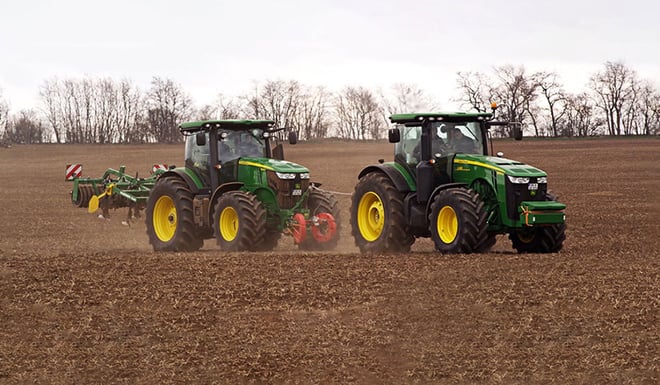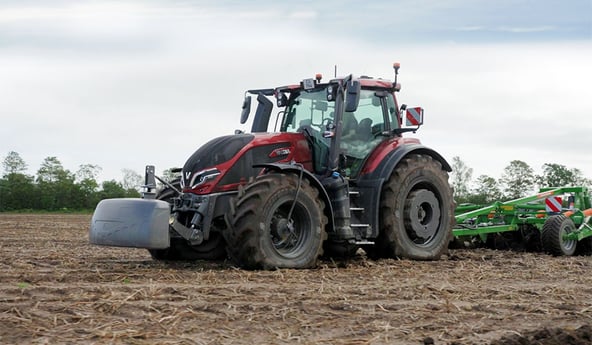It is easy to understand that you need to increase the inflation pressure in your tyres to compensate for the weight of the implements, but it’s harder to comprehend the real impact of speed in connection with load or pressure. Yet these three factors are indissociable, involving settings on three levels to obtain the most from your tyres. The link between the three is often misunderstood, but if you get the settings right you will improve your productivity considerably: less slip, more traction, less fuel consumption, more load and less soil compaction…
When you change one of the three parameters you compensate with another, you choose what is most important for the farm or the activity chosen: less pressure for soil preservation, more speed to gain time or more load to work with heavier implements, it’s a question of choice and work priorities in order to use your tyres to the best of their capacities.
The advantages of a good balance between load, pressure and speed for your agricultural tyres
Each agricultural tyre has its own technical characteristics and if these are taken into consideration this extends the lifespan of the equipment while preserving your soil. To improve efficiency, it is important to comply with the manufacturer recommendations, in particular the load index, speed rating and maximum pressure authorised for your tyre model.
Beyond the limits which must not be exceeded, choosing the right settings for these 3 indissociable parameters which are load, speed, and pressure allows you to benefit from many advantages in conducting your operations:
Less slip
When you transport heavy loads, you increase the pressure in the tyres to compensate for the weight of the implements. Unfortunately, excess pressure results in the tyre sinking into the ground, which will increase rolling resistance and cause excessive slip in wet conditions. A highly inflated tyre’s lack of suppleness will reduce its self-cleaning capacity and lead to the accumulation of earth between the lugs, increasing slip even more.
Respecting the load that corresponds to your tyres, calculating the most suitable pressure for this load and respecting the speed recommended for this load and pressure will make it possible to reduce rolling resistance and slip. Finding the right balance between the load, the pressure and the speed is also a good way of reducing premature wear to your tyres.
Better traction
During work in the fields, in particular in wet conditions, too much inflation pressure reduces the size of the soil footprint and the lugs do not have sufficient grip to provide adequate traction.
To optimise your vehicle’s tractive force, you must opt for good quality tyres which allow you to reduce pressure while maintaining the load for a given speed. The right settings will ensure that you have a maximum number of lugs in contact with the ground working simultaneously.

Reducing compaction
Soil compaction is one of the main factors limiting your yield. The compaction may be deep when the load to the axle is too high or in the case of unsuitable pressure settings.
Among the solutions which make it possible to reduce soil compaction, reducing inflation pressure and load are certainly the most important factors. Correct pressure settings that are perfectly adapted to the load combined with a controlled speed are the best means of preserving your soil.
Minimising consumption
The reduction of your tractor’s fuel consumption is impacted by these 3 elements, the pressure in the tyres, the load and the speed.
- In the fields, if these three settings are perfectly managed, you can reduce excessive slip which will reduce your fuel intake.
- On the road, the right pressure setting reduces rolling resistance, and therefore your fuel consumption. If you decide to reduce your speed by 10 km/h for all travel, your fuel savings will clearly show in your accounts at the end of the year.
- Adopting the right pressure and speed simultaneously means that you can perfectly compensate for the load, even a heavy load, and thus mechanically reduce your fuel consumption.
You can use pressure and speed to compensate for load while maintaining the right balance
The settings for load, pressure and speed may vary and differ on the basis of your work priorities while always maintaining a good balance between the three.
There are several correct settings possible depending on whether you wish to transport heavier loads, driver faster or preserve your soil more.
1. If your objective is to carry more load because your implements are heavy
If you wish to transport heavier loads, for example because your implements are wide and heavy, but you don’t wish to increase your inflation pressure so as not to damage your soil, you can adjust the three settings simultaneously.
Too much load puts the tyre under strain, so you can compensate by increasing the pressure to relieve the tyre, but this will be to the detriment of soil compaction. Otherwise you can compensate for the load by increasing the inflation pressure just a little while remaining within the right range for the soil, but reduce speed significantly.
This will enable you to avoid compaction despite using heavy implements, but of course, you will have to drive much more slowly.
Example: Here are two possible settings for the same tyres with the same load. The setting adjustments will concern pressure and speed.
- Fendt 724 one tractor 240 hp
- Front tyres = 600/60 R30 VF 158D
- Rear tyres= 710/60 R42 VF 173D
- Equipped with a 2,000 kg cultivator and a front mass of 2,100 kg, i.e. a total weight of 11,680 kg.
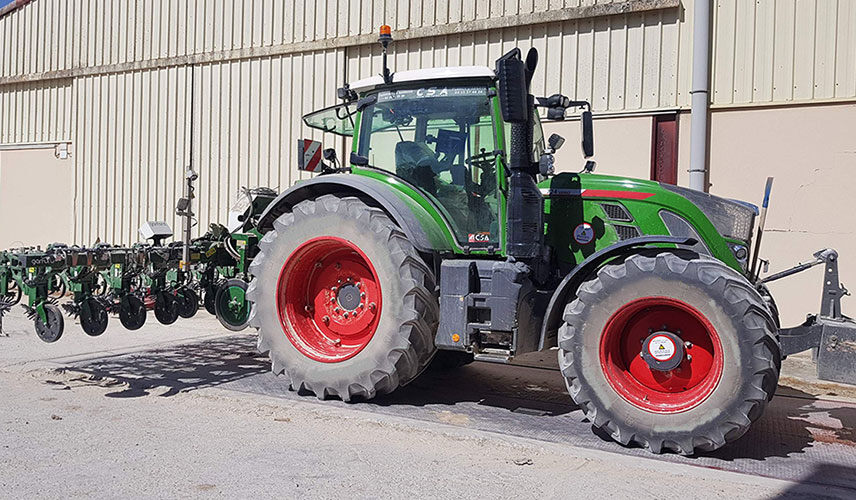
1st setting possible with 11,680 kg
- Front pressure = 1 bar up to 65 km/h
- Rear pressure = 1.4 bar up to 65 km/h
2nd setting possible with 11,680 kg
- Front pressure = 0.8 bar – maximum speed 30 km/h
- Rear pressure = 0.8 bar – maximum speed 30 km/h
2. If your objective is more speed because you have some distance to cover rapidly
If you want to give priority to speed, for example if there is some distance between your fields, you must either increase pressure or reduce the load by changing implements.
On the road, your priority may be speed to reach your fields rapidly, but remember that this type of setting will not be beneficial in terms of soil compaction when working in the fields, which could be important.
Example: Here are two possible settings for the same tyres with the same speed. The setting adjustments will concern load and speed.
- Fendt 826 D tractor 240 hp
- Front tyres = 600/70 R30 VF 168D
- Rear tyres = 650/85 R38 VF 182D
- Setting 1 = equipped with a 2,280 kg potato tiller and with a wheel mass of 1,600 kg, i.e. a total weight of 14,840 kg.
- Setting 2 = equipped with a 1,280 kg front-mounted clod crusher, a 3,800 kg rear-mounted rotary harrow and with a wheel mass of 1,600 kg, i.e. a total weight of 19,100 kg.

1st setting possible up to 65 km/h
- Front pressure = 0.8 bar for 14,840 kg in total
- Rear pressure = 1 bar for 14,840 kg in total
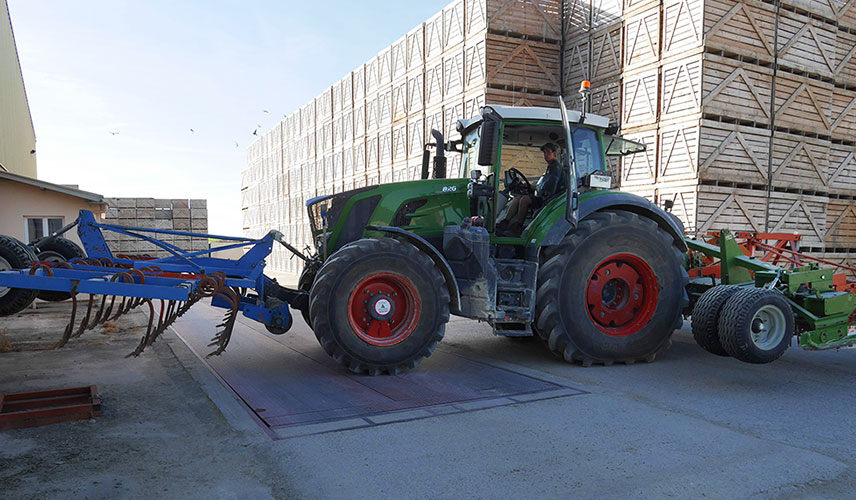
2nd setting possible up to 65 km/h
- Front pressure = 1.2 bar for 19,100 kg in total
- Rear pressure = 1.6 bar for 19,100 kg in total
3. If your objective is to avoid soil compaction, to secure future yields
The quality of the soil in your fields is vital to improve or maintain your yields at a high level over time.
Decreasing pressure is a good solution, but be careful because pressure that is too low with a heavy load can put the tyre under considerable strain, so you must either reduce the load if this is possible to limit the crushing of the tyre into the ground, or if this is not feasible, you must reduce your speed, which will mean that you take longer to finish the work in your field.
Example: Here are two possible settings for the same tyres with low pressure. The setting adjustments will concern load or speed.
- Fendt 939 tractor 390 hp
- Front tyres = 650/65 R34 IF 161D
Rear tyres = 710/75 R42 IF 176D - Setting 1 = equipped with a 6 metre, 4,560 kg stubble plough and with a rear wheel mass of 2,000 kg and a front mass of 2,000 kilos, i.e. a total weight of 19,720 kg.
- Setting 2 = equipped with a 4 metre, 3,460 kg soil aerator and with a rear wheel mass of 2,000 kg and a front mass of 2,000 kg, i.e. a total weight of 16,960 kg.
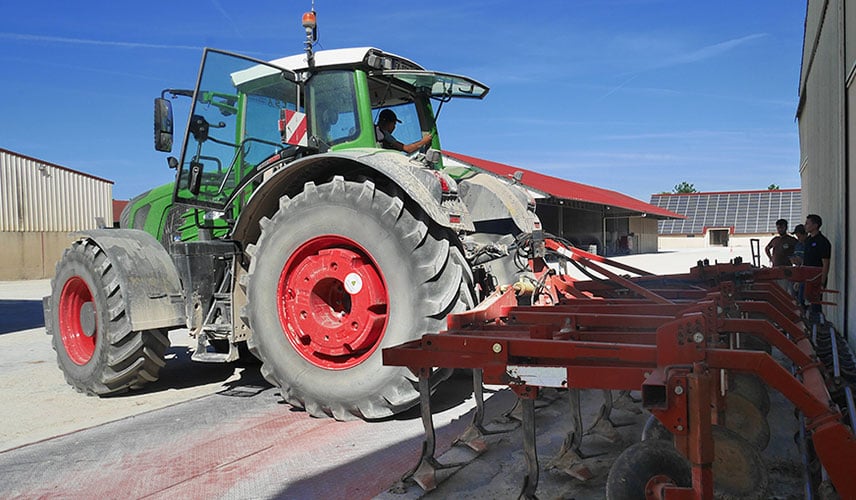
1st setting possible at low pressure
- Front pressure = 0.8 bar for 10 km/h in the fields with 19,720 kg in total
- Rear pressure = 1.3 bar for 10 km/h in the fields with 19,720 kg in total
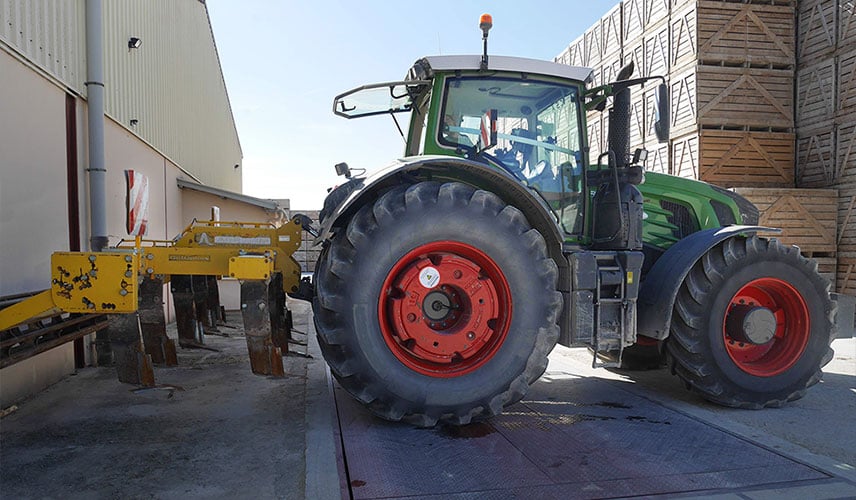
2nd setting possible at low pressure
- Front pressure = 1 bar for 10 km/h in the fields with 16,960 kg in total
- Rear pressure = 0.9 bar for 10 km/h in the fields with 16,960 kg in total
The advantages of VF technology to simplify load/speed/pressure management
The compensation solutions put forward above essentially concern standard radial agricultural tyres. Nevertheless, the use of high-tech tyres can avoid you having to adjust your inflation pressure regularly based on your load and your speed.
Less pressure adjustments
By opting for low-pressure VF (Very high Flexion) tyres, you will no longer have to adjust pressure each time you go from field to road, although there are still some limits that you must not exceed.
These top range tyres are characterised by their extensive flexion and deflection capacity. Thanks to their reinforced structure, VF tyres allow you to drive on the road while maintaining a low inflation pressure.
Their flexible sidewalls are capable of absorbing the road’s imperfections without any problem for a more comfortable ride.
Less limitations in terms of speed
The use of VF tyres such as the VT-TRACTOR mean that you have less limitations in terms of speed, but always within certain limits.
They are effectively approved for use on the road at a maximum speed of 70 km/h, and if you stay within the 20 to 65 km/h range, you can keep the lower pressure that was used beforehand for working in the fields.
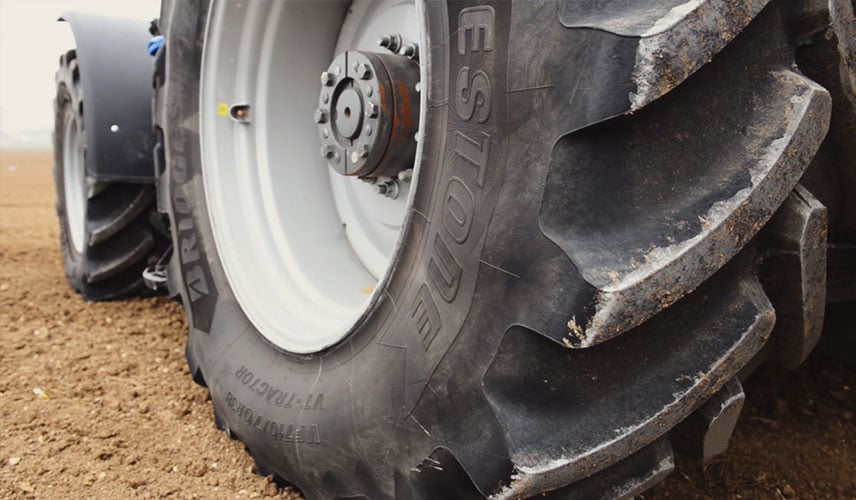
Less limitations in terms of load
Another equally important advantage of VF tyres is their capacity to bear up to 40% more load than standard agricultural tyres.
This allows you to transport bigger, more voluminous implements to improve your productivity, without having to increase the inflation pressure too much.
Better soil preservation
For a given load, VF tyres such as the VT-TRACTOR allow you to keep the same pressure, irrespective of speed.
This top class Bridgestone tyre works at a pressure range beginning at 0.8 bar with a soil footprint that is 26% bigger than standard tyres, leading to a reduction in soil compaction and better lug grip during work on loose or wet ground.
The Bridgestone-agriculture.eu blog is written and administered by tractor tyre experts who are available to provide you with the advice that you need about your farming tyres. They will help you to maximise your productivity with information on all things relating to tyres: inexpensive tractor tyres - technical data for farming tyres - advice on farming tyre pressure - solution to avoid soil compaction - sprayer tyre pressure - Why and how to ballast your tractor tyres - when to use twin wheels - the mechanical causes of abnormal wear - cheap agricultural tyres - etc.
To take it a step further and increase the profitability of your farm, the tractor tyre experts has prepared a free, highly detailed, ebook which explains the essential role of farming tyres on your productivity.
Most people who read this article have also read some of the following articles:
- 12 simple tips to better manage the pressure of your agricultural tyres
- How can I be sure that my agricultural tyres are always at the right pressure?
- Pressure: it’s the volume of air in the tractor tyre that counts
- Non-adjusted tyre pressure will lead to damage to my tyres
- How much does it cost you not to adjust the pressure of your agricultural tyres?
- How to get rid of the tractor tyre pressure adjustment step
- Farming tyres, pressure monitoring or full Central Tyre Inflation System CTIS
- 7 advantages of low-pressure tyres compared to normal tyres
- What is the right inflation pressure for any tractor tyre
- The keys to working at very low pressure with your agricultural tyres
This information is intended only to make you aware of the technical and functional aspects of agricultural tires and their use. It does not allow you to make a judgment or a definitive conclusion on a given problem. Only your agricultural tire expert is able to make a technical assessment and take a final decision, case by case.
Leave a
commentary
Your email address will not be published.
Required fields are indicated with *


